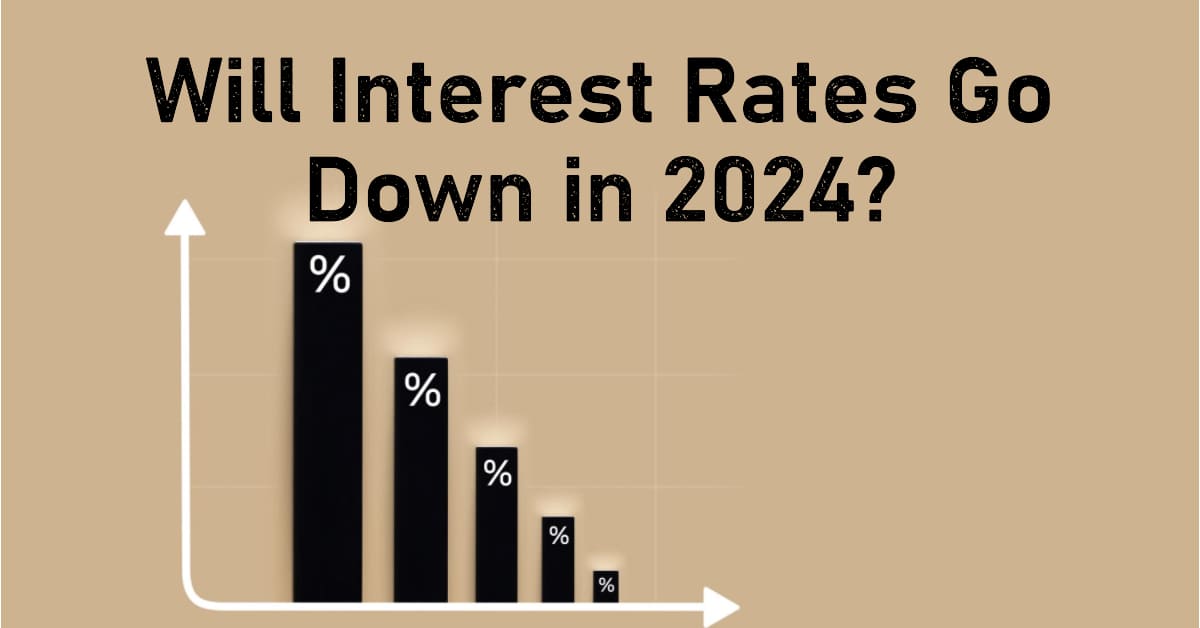As the finance world watches with bated breath, the question at the top of everyone's mind is: Will the Federal Reserve lower interest rates in 2024? This topic is crucial for homeowners, consumers, businesses, and investors alike. In this in-depth article, we'll analyze the current economic landscape, examine expert predictions, and consider the potential impacts of any changes in the Federal Reserve's interest rates.
Will the Interest Rate Go Down in 2024?
Recent Federal Reserve Meetings
In recent months, the Federal Reserve has held several significant meetings that provide clues about the future of interest rates. To establish the context:
- June 2024: The Federal Reserve decided to hold interest rates steady after its meeting. This decision reflects caution and an emphasis on monitoring inflation trends before making definitive moves.
- March 2024: Fed officials projected three rate reductions for the year, likely starting in June. However, high inflation rates and economic uncertainties may alter this path.
Inflation and Economic Indicators
Key economic indicators such as inflation, GDP growth, and unemployment rates play pivotal roles in shaping interest rate decisions. Let’s examine these factors:
- Inflation Rates: The current inflation rate stands at approximately 4.2%, significantly higher than the Fed's target of 2.0%. High inflation makes it challenging to cut interest rates without risking further economic instability.
- GDP Growth Rate: Annual GDP growth is around 2.1%, below the desired rate of 3.0% to 3.5%. This slower growth may prompt the Fed to consider rate cuts to stimulate the economy.
- Unemployment Rate: A steady yet slightly elevated rate of 3.8% indicates a robust job market. However, lower unemployment can lead to wage inflation, complicating interest rate decisions.
Table: Key Economic Metrics
| Metric | Current Value (2024) | Target Value |
|---|---|---|
| Inflation Rate | 4.2% | 2.0% |
| Unemployment Rate | 3.8% | Below 4.0% |
| GDP Growth Rate (Annual) | 2.1% | 3.0%-3.5% |
Explanation:
- Inflation Rate: Persistently high inflation complicates efforts to reduce interest rates.
- Unemployment Rate: The stable job market is both a boon and a challenge, as lower unemployment can drive inflation.
- GDP Growth Rate: Moderate growth highlights the potential for rate cuts to invigorate the economy.
Expert Predictions for Interest Rate
Economic Analysts' Views
While different experts have varying opinions on the future of interest rates, some commonalities can be drawn:
- Morningstar Predictions: According to Morningstar, the federal funds rate target range is projected to fall from 5.25% to 5.50% in April 2024 to approximately 2.75%-3.00% by the end of the year.
- Bankrate Analysis: Persistent inflation above the Fed's 2% target could delay the anticipated interest rate cuts, as the central bank grapples with balancing inflation control and economic growth.
- CBS News Report: Early in the year, many economists expected the first rate cut at the March meeting, but only 1 in 10 now foresee that, indicating widespread uncertainty.
Key Points from Analysts:
- Potential for Rate Cuts: While initial projections indicated multiple rate cuts in 2024, inflation rates might delay these plans. Rate cuts could occur gradually rather than all at once.
- Economic Resilience: Despite concerns, some analysts believe the economy can withstand higher interest rates, cautioning about a more shallow easing path.
Further Insight:
Some experts, while agreeing on the potential for rate reductions, emphasize the nuanced approach required. Given the economic resilience and persistent inflation, the Fed might opt for a cautious path with smaller, incremental cuts.
Table: Projected Fed Interest Rate Changes
| Timeframe | Projected Rate Range | Potential Impact |
|---|---|---|
| April 2024 | 5.25% – 5.50% | Status Quo; monitoring inflationary pressures |
| June 2024 | 4.75% – 5.00% | Initial cuts in response to slowing inflation |
| December 2024 | 2.75% – 3.00% | Substantial cuts contingent on inflation control |
Explanation:
- April 2024: Stability in interest rates, focusing on observing inflation trends.
- June 2024: Potential initial cuts if inflation shows signs of slowing.
- December 2024: More significant cuts by year-end, provided inflation is under control.
Understanding the Implications
Impact on Various Sectors
The Fed’s interest rate policies have far-reaching implications across various economic sectors:
- Real Estate: Interest rates significantly affect mortgage rates, which in turn impact housing market activity.
- Consumer Spending: Lower interest rates generally boost consumer confidence and spending.
- Business Investments: Reduced borrowing costs make it easier for businesses to invest in capital expenditure and expansion.
Table: Sectoral Impact of Interest Rate Cuts
| Sector | Potential Impact of Rate Cuts |
|---|---|
| Real Estate | Increase in housing sales and property values. |
| Consumer Spending | Surge in retail and durable goods purchases. |
| Business Investment | Higher capital expenditures and business expansions. |
Explanation:
- Real Estate: Prospective homeowners and investors benefit from lower borrowing costs, resulting in increased market activity.
- Consumer Spending: More disposable income leads to boosted retail sales and durable goods purchases.
- Business Investment: Companies utilize lower rates for expansion and capital investments, promoting economic growth.
Challenges and Considerations
Persistent Inflation Concerns
Inflation stands as the most significant hurdle in the Fed's path to reducing interest rates. The balance between supporting economic growth and controlling inflation is delicate. The Fed’s reluctance to cut rates aggressively without seeing substantial progress in lowering inflation underscores the complexity of the situation.
Global Economic Variables
Economic projections are inherently uncertain due to various global factors:
- Geopolitical Tensions: Conflicts and trade tensions can disrupt economic stability.
- Pandemic Residuals: Lingering effects from COVID-19 still impact supply chains and global trade.
- Technological Disruptions: Rapid advancements can reshape economic landscapes unpredictably.
Consumer Behavior Trends
Shifts in consumer confidence and spending habits are unpredictable but critical. With economic data reflecting confidence levels, spending shifts can lead to unexpected changes in economic forecasts and, subsequently, interest rate decisions.
Summary
2024 presents a landscape filled with both opportunities and challenges regarding Federal Reserve interest rates. While there is potential for rate cuts, persistent inflation and the necessity of maintaining economic stability make the path forward complex and uncertain. Consumers, businesses, and investors should remain vigilant and adaptable to the evolving economic conditions.
References:
- https://www.federalreserve.gov/newsevents.htm
- https://fred.stlouisfed.org/series/EFFR#




